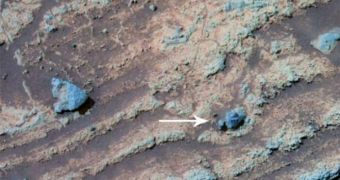A team of experts has recently embarked on a very complex study dealing with the Red Planet. What they want to discover is whether or not the planet's atmospheric density was larger in its distant past than it is now. At this point, its atmospheric density is just 1 percent that of Earth's.
Planetary scientists studying Mars are faced with a dilemma. They need to explain why the Red Planet was capable of holding liquid water at its surface, when its atmosphere is currently not dense enough to allow for such a scenario.
Granted, very low atmospheric pressure is just one of the reasons our neighboring world cannot host liquid water on its surface now, but things may have looked completely different billions of years ago. This is precisely what experts from the Georgia Institute of Technology are trying to determine.
By looking exclusively over Martian surface data, it becomes clear that the world can no longer support the presence of liquid water. But the Mars Exploration Rovers Spirit and Opportunity, as well as the Phoenix Mars Lander, demonstrated that the chemical once flowed freely on the Martian surface.
Given this discrepancy, scientists are now turning their attention to determining an exact value of atmospheric pressure on Mars billions of years ago. Conducting such studies is an extremely complex task, since it's very difficult to gain such information here on Earth, let alone on another world.
However, the Georgia Tech team believes it may have found a way to do this. According to assistant professor Josef Dufek, combining data collected by Spirit with additional information on ancient volcanic eruption could reveal the necessary insights into the planet's deep past.
Details of how he and his team conducted this investigation are published in the latest issue of the esteemed journal Geophysical Research Letters. The paper argues that early Mars was surrounded by a water-saturated atmosphere that was at least 20 times denser than it is today.
“Atmospheric pressure has likely played a role in developing almost all Mars’ surface features. The planet’s climate, the physical state of water on its surface and the potential for life are all influenced by atmospheric conditions,” says Dufek.
The expert also holds an appointment as an instructor in the School Earth and Atmospheric Sciences at Georgia Tech. He and his group based their study on a bomb sag found near Home Plate, the location where Spirit landed on Mars, in 2004.
A bomb sag is a landscape feature caused by a rock fragment that impacts volcanic sediment, after being propelled high in the atmosphere during a volcanic eruption.
After modeling the impact in the lab, the team concluded that its characteristics could have only occurred if the atmosphere was 20 times denser when the eruption took place.

 14 DAY TRIAL //
14 DAY TRIAL //